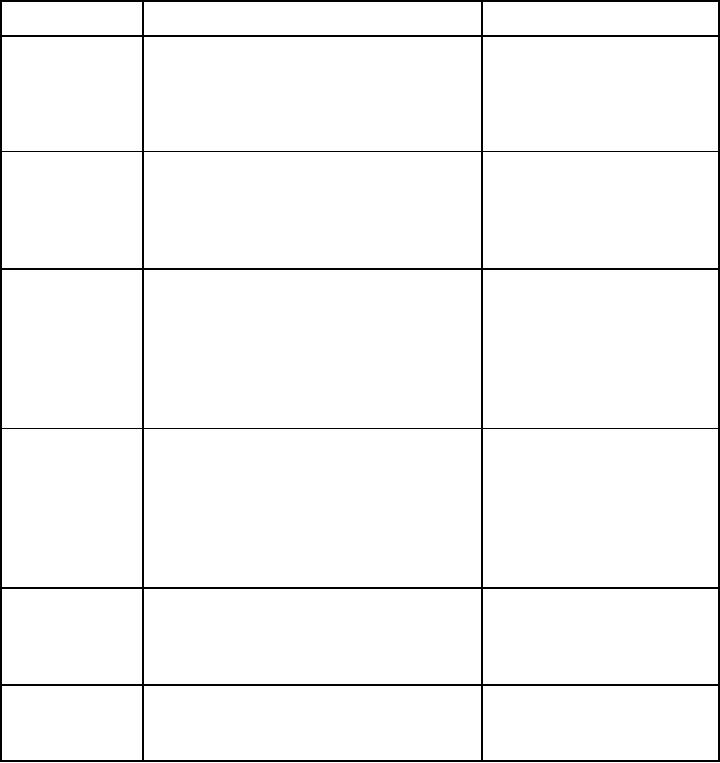
Type
Characteristics
Hazards to Aviation
or snow flurries.
Stratus
Flat, shapeless, dull gray, uniform layer
Only light turbulence and
of cloud. Precipitation in the form of
moderate icing may be
drizzle only.
present. Visibility is very
poor when drizzle
occurring.
Dense clouds with vertical development.
Strong updrafts occur
The cloud s upper surfaces are dome
within and under these
shaped and exhibit rounded
clouds. Turbulence and
protuberances, while their bases are
icing of varying intensities
nearly horizontal.
are common depending on
the extent of vertical
development.
Cumulus clouds with great vertical
Extreme turbulence and
development that resembles mountains
severe icing. Severe up
or towers. Tops may extend higher than
and down drafts.
60,000 feet and resemble an anvil.
Microbursts and low-level
Precipitation is violent with intermittent
wind shear occur under this
showers.
type of cloud. Damaging
hail is possible.
Large, baggish clouds with
This type of cloud indicates
Mammatus
protuberances, like udders or pouches,
extreme turbulence.
on the undersurface.
Conditions ideal for tornado
development.
Lenticularis
Clouds have the shape of lenses or
Usually associated with
almonds. Normally formed by wind flow
extreme turbulence.
in mountainous areas.
Table 1-6 -- Cloud types
FRONTS AND ASSOCIATED WEATHER
In this section, we will discuss the general nature of fronts, how fronts form and move,
and the weather patterns associated with the four classifications of fronts (cold, warm,
stationary, and occluded).
1-13

